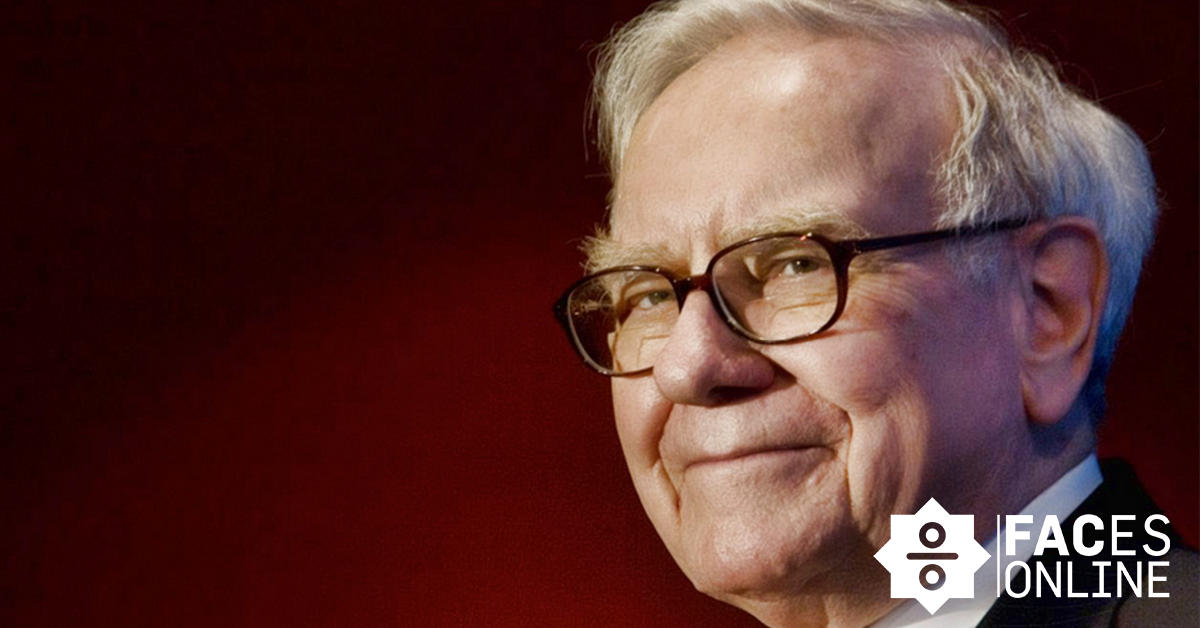The name Warren Buffett will not be unfamiliar for many students. In many lectures, this successful investor is discussed, in which his important investment strategies are explained. It is not surprising that his name is often mentioned in school, since Warren Buffett is considered one of the most successful investors in history. This article discusses how Warren Buffett started investing, how he became so successful, what his important strategies are and which other big names in the investment world have inspired him.
The first lesson
From an early age on, Warren Buffett had set out to get rich quick and started reading books on investing [1] . At the age of 11, Buffett bought his first three shares of oil company Cities Service for about $38 each. Buffett sold them again for $40, making a small profit. Here Buffett learned his first important lesson about being patient, as the price later skyrocketed to $200 per share [2].
His inspiration Benjamin Graham
At the age of 19, Warren Buffett was introduced to the ideas of Benjamin Graham through the book “The intelligent Investor”. Benjamin Graham was an influential investor in the 20th century and is known as the founder of value investing. Graham argued that investors should strive to profit from the vagaries of the stock market. He argued that most people went along with the groupthink of the market. Graham further believes that the intrinsic value of a company is very important. By intrinsic value, Graham meant the estimated price an investor gives, based on their own analysis, for a particular stock. According to Graham, intrinsic value should be assessed on the basis of the balance sheet. In short, the value of a company can be calculated by subtracting the debts from the assets. (https://www.brokerfind.nl/warren-buffett/ ). If the actual value of a company is below its intrinsic value, the investor can profit on it. Benjamin Graham’s favorite metaphor was that of “Mr. Market”. Mr. Market gives you an offer every day to buy or sell his shares at a different price. Mr. Market’s suggested prices are often based on emotions. A strong investor can manage his emotions and will only make decisions on his own analyses and facts [3].
“The rejection turned out to be the best thing that ever happened to him.”
Study time of Warren Buffett
In part because of the book “The Intelligent Investor,” Warren Buffett enrolled at Columbia Business School. However, this university was not his first choice. Buffet initially wanted to study at the Harvard Business School. However, he was rejected for this. In retrospect, this rejection turned out to be the best thing that ever happened to him. The rejection opened the door to Columbia. Buffett recognized the name of Benjamin Graham. He wrote a playful letter to the university, in which he wrote that he was under the impression that Benjamin Graham was long dead. When he found out that Graham was alive after all and he turned out to teach at Columbia, he was eager to go to Columbia. From Benjamin Graham, Warren Buffet learned two golden rules, the first was to never lose money and the second was to never lose sight of rule one [4] .
His first career steps
Buffett founded his first own investment company ‘Buffett Associates’ in 1956. Later Buffett took charge of Berkshire Hathaway, which was initially a textile factory. Buffett liquidated all the assets of Berkshire Hathaway. This transformed investment company bought up many companies, so the Berkshire Hathaway conglomerate consists of companies from all kinds of sectors. One of Berkshire Hathaway’s successful investments was Coca Cola, as it made more than 2 billion euros between the period of 1998 and 2006. The success of the stock is partly due to Coca Cola’s corporate share, as the company has a sustainable advantage over its competitors and thus scores well on Michael Porter’s five forces model [5] [6] .
Buffett’s applied strategies
In general, Buffett follows the principles on value investing of Benjamin Graham. Buffett further takes into account the corporate performance of a stock. As a result, Buffett’s strategy differs from Graham’s, because Buffet emphasizes the importance of a company’s quality and favors holding stocks for long periods of time. According to Buffett, stock prices are very volatile and many intermediate fluctuations take place. To recover from this a long investment horizon is needed. The billionaire also lives with the intention of never selling the stock, making it important to invest in quality companies that remain capable of generating profits. In this regard, Buffett believes that the interest-on-interest effect is important, as it ensures the exponential growth of your wealth. This is actually a kind of snowball that rolls downhill and is its way into bed getting bigger and bigger. Furthermore, Buffett recommends keeping costs as low as possible. So, it’s not wise to get in and out of a stock a lot given the transaction costs involved. Also, Warren Buffett describes that diversification is the protective tool against ignorance, because diversification lowers the risk [7].
“However, he did change his mind in 2016.”
Missed the boat
Returning to the last point of the previous paragraph, ignorance is a major focus of Warren Buffett’s strategies. After all, Buffett argues that if you don’t understand something, you can’t make money from it. It is important to invest in companies and sectors that you know well. For example, in 1999 Warren Buffett ignored the rise in dot.com stock because he did not understand the earnings model. After stock prices collapsed in the spring of 2000, Buffett indicated that investors who did invest were hypnotized by the dizzying rise in tech stocks and ignored everything else, such as whether they were making any money at all from the companies they invested in. Investors were attracted by rising stock prices, and Buffett argued that Internet companies were designed more with an eye toward making money from investors rather than making money for them [8] . In the end, shares in tech companies, for example of Apple, rose significantly and Buffett still missed the boat here. However, he did change his mind in 2016 and invested in Apple. This also fits in with the strategy of investing in companies with a good market share. Partly due to the stake in Apple, Berkshire Hathaway performed excellently in the 2020 close [9] . Nevertheless, Buffett remains skeptical about the unknown. For example, the now 91-year-old American has indicated that he finds Bitcoin disgusting. According to Buffett, the currency lacks underlying value and the entire asset is a sham [10] .
Sober lifestyle and charities
Warren Buffett is one of the richest individuals in the world. However, you wouldn’t be able to say that if you look at his lifestyle. He doesn’t spend much money and still lives in a house he bought in 1958. Moreover, he enjoys having breakfast at McDonalds every day and playfully takes a cheap menu when the results are bad. According to Buffett, living with less than you have is one of the most important lessons for building wealth, leaving enough money to invest. In addition, the billionaire places a high value on investing in yourself. By doing so, you learn certain skills from which you can benefit later. (https://finansjaal.nl/warren-buffett-lessen/). Furthermore, Buffett is known for his donations to charities. Buffet promised in 2006 to donate all of his Berkshire Hathaway shares away to five charities [11] . Thus, in 2019, the American gave $3.6 billion to these five foundations [12] . Buffett’s motivation is that his wealth is better spent on charities than on the investment portfolios of his offspring. Among other things, he wrote to his shareholders that you should give children enough to do everything, but not so much that they don’t have to do anything anymore [13] .
Buffett’s important right hand man
Another important name when talking about Warren Buffett is that of Charlie Munger. Munger, the vice chairman of Berkshire Hathaway, is Warren Buffett’s investment partner. Munger and Buffett met in 1959, but did not become Warren Buffett’s right-hand man until 1979. This was partly because Munger initially practiced a different profession and had his own real estate office. However, he decided to focus on investments starting in 1965. Munger decided to form an informal partnership with Warren Buffett and in 1979 he joined Berkshire Hathaway permanently. Munger is often in Buffett’s shadow, but he too is a very successful investor. Despite the strong bond between the two, Munger is somewhat different in terms of character. Whereas Buffett comes across as sympathetic, Munger is known for his blunt, no-nonsense approach to speaking. Furthermore, he can come across as openly critical, although Munger is still somewhat introverted in character. As a result, Charlie Munger has a somewhat lower profile than Warren Buffett [14]. Another difference between the two is that Munger was admitted to Harvard, while Buffett was not. Despite the differences in terms of personalities, Buffett took a lot of advice from Munger’s knowledge and insights and Munger took over the role of confidant from Benjamin Graham. This switch was perfect for Warren Buffett, as Graham’s expertise, stocks quoting above their book value, were hardly to be found around the 1980s and Buffett can use Munger’s knowledge about companies with competitive advantages [15] .
The 91-year-old Buffett is far from wanting to quit. The American says he is not afraid to die, and partly because of that he still maintains his “unhealthy” lifestyle of eating at McDonald’s a few times a week. One thing is certain: Warren Buffett’s strategies and ideas will be cited for decades to come to learn from the world’s best investor of all time.

















